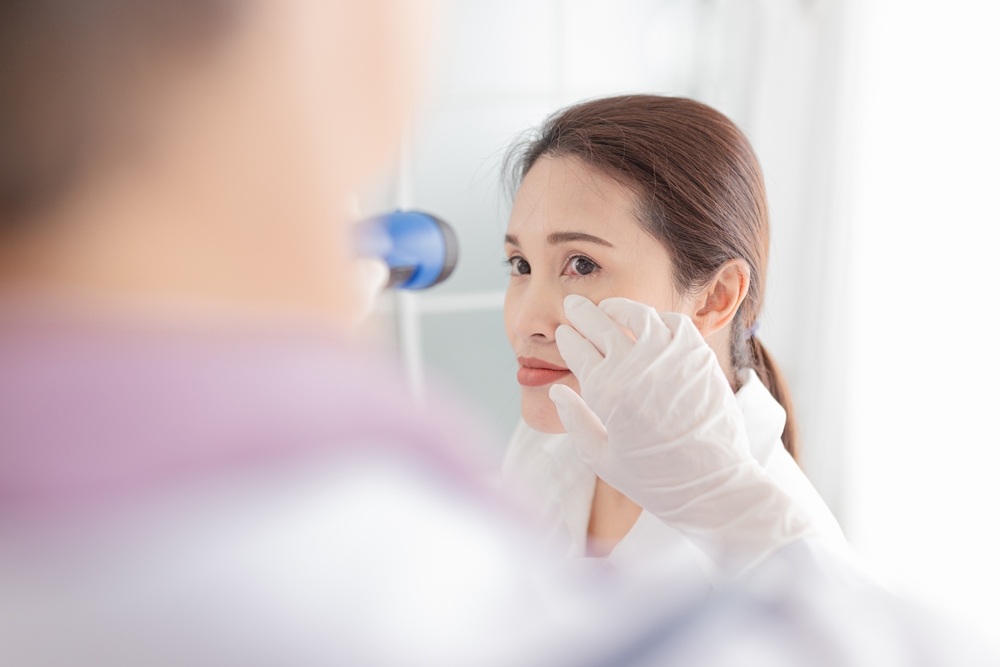
When Dry Eyes Aren't What They Seem: Understanding and Recognizing Neurotrophic Keratitis
Dry eye syndrome is a common complaint that brings countless individuals into eye clinics each year, often with symptoms of irritation, burning, and redness. However, not all cases of dry, uncomfortable eyes are due to typical dry eye syndrome. One lesser-known but critical condition is neurotrophic keratitis (NK), which can masquerade as dry eyes while having very different underlying causes and treatments.
What is Neurotrophic Keratitis?
Neurotrophic keratitis is a degenerative disease that affects the cornea. Unlike typical dry eye, neurotrophic keratitis results from damage to the corneal nerves, often leaving the eye unable to properly sense dryness or injury. This nerve damage can prevent normal tear production and reduce blinking, which leads to worsening eye surface damage, ulcers, and even vision loss.
While dry eye disease is primarily related to a lack of moisture and tear production, neurotrophic keratitis can deceive patients and doctors alike because the eye may not feel dry at all—even when the corneal surface is severely damaged.
Recognizing Neurotrophic Keratitis vs. Dry Eye
The symptoms of neurotrophic keratitis may overlap with those of dry eye syndrome, but there are key distinctions:
• Reduced Sensation: A major hallmark of NK is that patients often don’t feel much eye discomfort, even when significant corneal damage is present. In contrast, dry eye patients frequently experience pain, stinging, and irritation.
• Corneal Changes: NK can lead to corneal ulcers or scarring, particularly in the later stages. While dry eye may cause discomfort, it usually doesn’t result in such severe damage to the cornea.
• Slow Healing: NK significantly delays wound healing in the cornea, making even minor injuries take much longer to resolve compared to someone with traditional dry eyes.
• Underlying Causes: Neurotrophic keratitis is often linked to specific underlying conditions that affect the nerves, such as herpes simplex or zoster infections, diabetes, or previous eye surgeries like LASIK or cataract surgery. These aren’t typical causes of standard dry eye.
Why It's Important to Catch Neurotrophic Keratitis Early
Because neurotrophic keratitis may not cause obvious symptoms in its early stages, it is easy to overlook. Many patients with this condition may continue treating it as a simple dry eye problem, only to realize there is a deeper issue when the corneal surface begins to break down.
Without timely intervention, neurotrophic keratitis can lead to serious complications, including corneal ulcers, perforations, and even permanent vision loss. The earlier neurotrophic keratitis is diagnosed, the better the chances of preserving vision and preventing corneal damage.
How is Neurotrophic Keratitis Diagnosed?
Diagnosing neurotrophic keratitis requires a thorough evaluation by an eye specialist. A key part of the diagnostic process involves testing the corneal sensitivity using instruments that measure how well the eye reacts to touch. Reduced or absent corneal sensation is a strong indicator of neurotrophic keratitis.
Additionally, imaging techniques may be used to evaluate the structure and health of the corneal surface. Patients with a history of conditions that affect the nerves, such as diabetes or prior eye surgery, may be at higher risk for neurotrophic keratitis.
Treatment Options for Neurotrophic Keratitis
The treatment approach for neurotrophic keratitis is different from that of traditional dry eye syndrome. Managing neurotrophic keratitis involves addressing the nerve damage and promoting corneal healing. Treatment options may include:
• Lubricating Drops: While lubricating drops can provide relief, they are often not sufficient to manage NK on their own.
• Growth Factor Eye Drops: Specialized eye drops that contain nerve growth factors, like cenegermin, can help promote corneal healing and stimulate nerve regeneration.
• Amniotic Membrane Therapy: Applying an amniotic membrane to the cornea helps protect the eye’s surface and promote tissue healing.
• Tarsorrhaphy: In more advanced cases, a surgical procedure called tarsorrhaphy may be used to partially close the eyelids to protect the cornea and allow it to heal.
• Other Specialized Treatments: Depending on the severity of NK, additional therapies like scleral lenses or even corneal transplants may be necessary.
Schedule Your Consultation with Houston Dry Eye Clinic Today
Neurotrophic keratitis is a complex and often overlooked eye condition that can have serious consequences if left untreated. By understanding the key differences between dry eye disease and neurotrophic keratitis, you can be better equipped to recognize the signs and symptoms and seek prompt medical attention.
The experienced team at the Houston Dry Eye Clinic is dedicated to providing exceptional care for patients with neurotrophic keratitis and other challenging eye conditions. Through advanced diagnostics, personalized treatment plans, and a commitment to patient education, the clinic is helping individuals maintain their eye health and protect their vision.
If you or a loved one are experiencing persistent eye dryness, irritation, or other unexplained eye-related symptoms, schedule a consultation with Houston Dry Eye Clinic to manage neurotrophic keratitis and other complex eye conditions. Contact our office in Houston, Texas, by calling (713) 664-4760 to book an appointment today.




